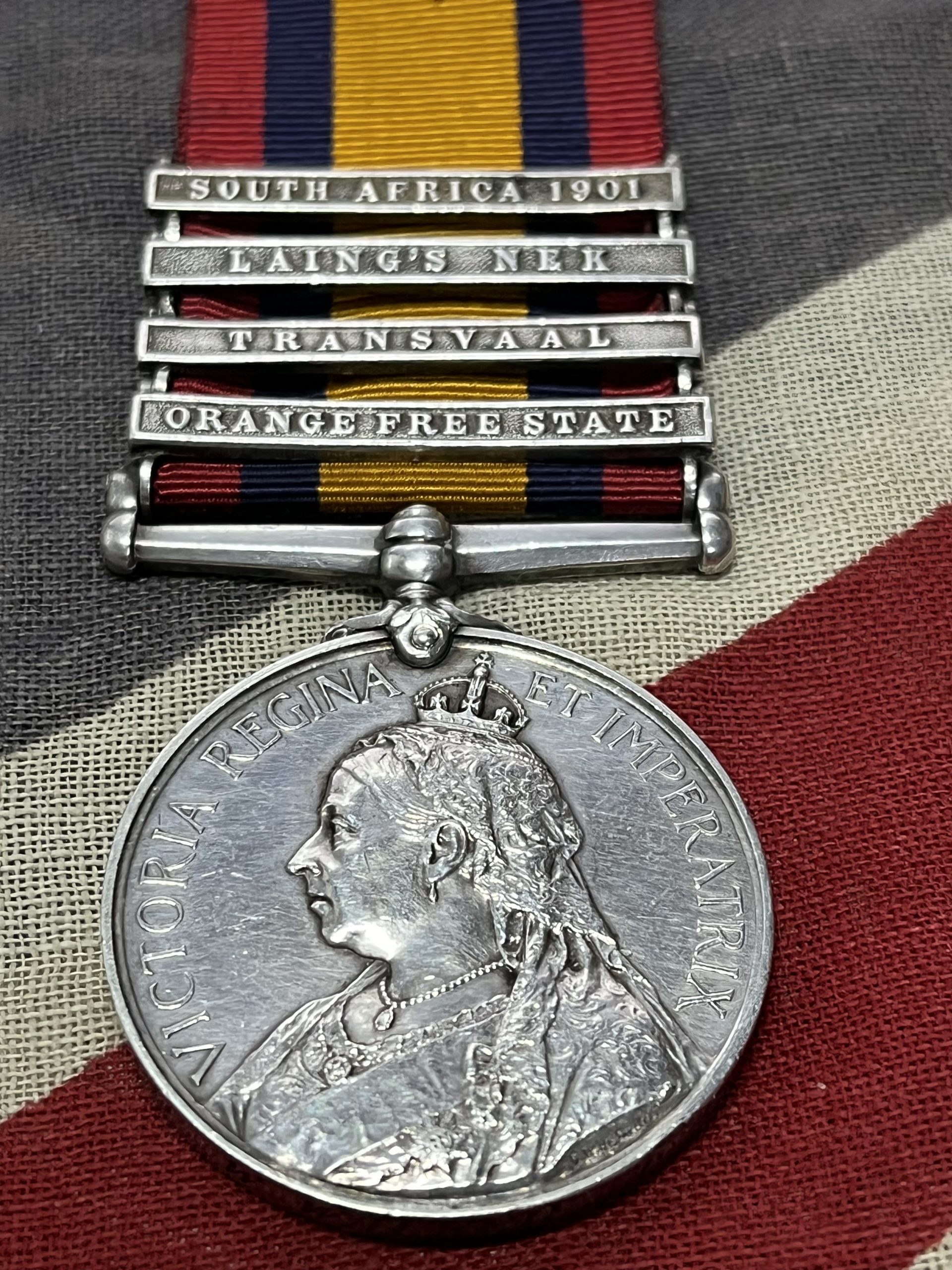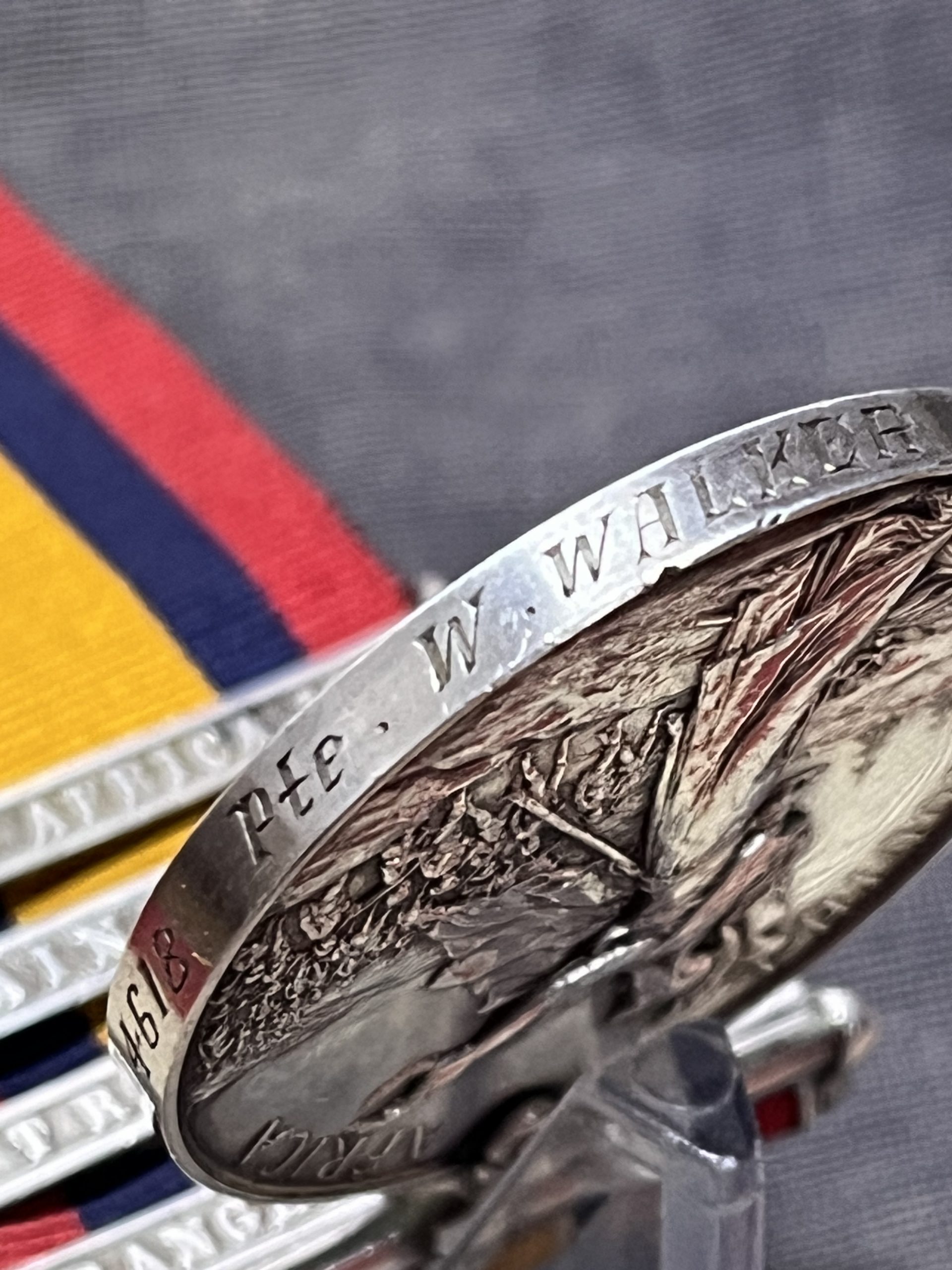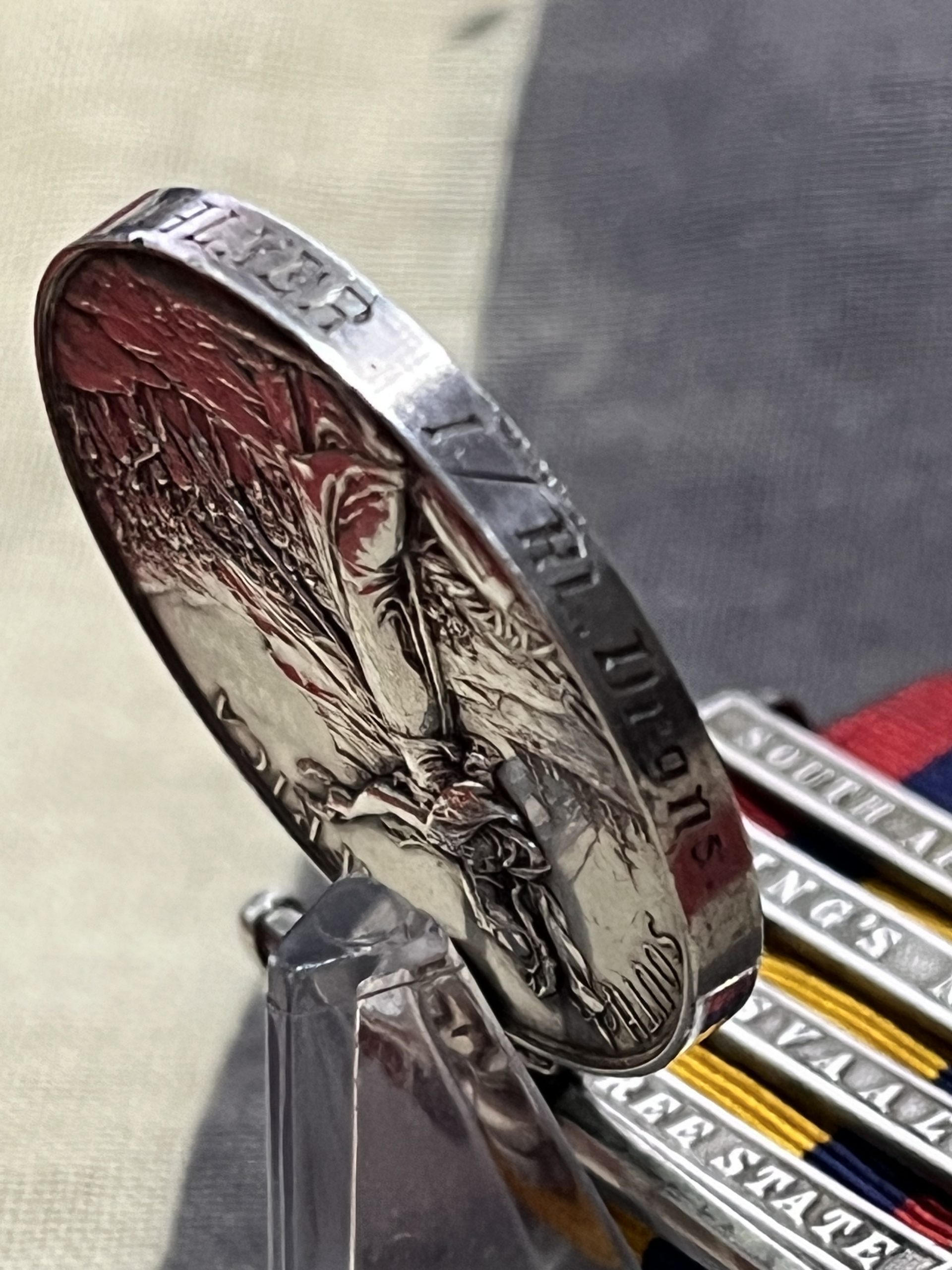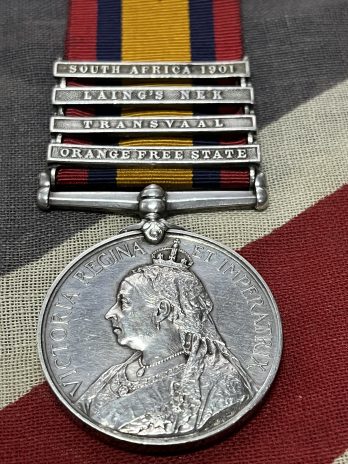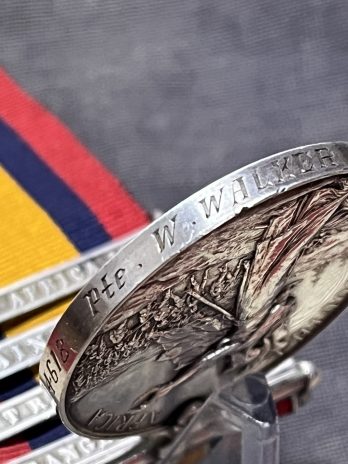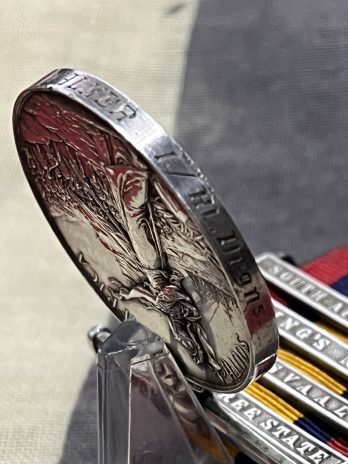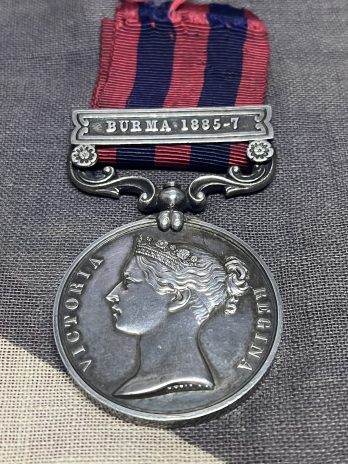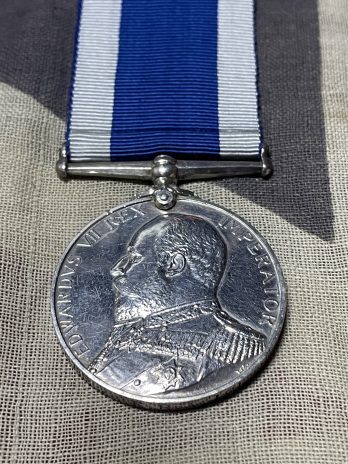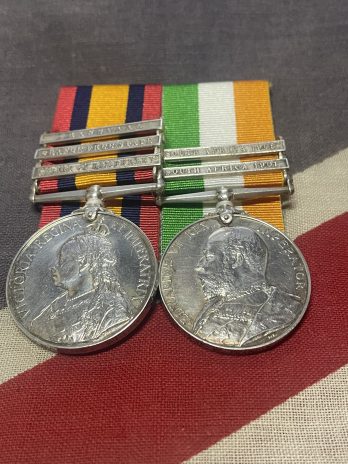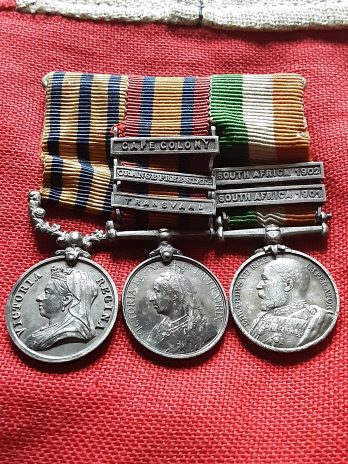Correctly named 4618 Pte W Walker 1/Rl Drgns
Clasps confirmed on rolls. South Africa 1901, Laings Nek, Transvaal and Cape Colony.
The regiment sailed in the beginning of November 1899, and arrived at Durban about the 26th. They performed excellent service during the operations for the relief of Ladysmith. The regiment was present at Colenso, 15th December (see 2nd Queen’s, Royal West Surrey), but was not heavily engaged.
When the turning movement by the west was attempted the regiment was in the Mounted Brigade under Lord Dundonald, along with the 13th Hussars, South African Light Horse, Thorneycroft’s Mounted Infantry, part of Bethune’s Mounted Infantry, some regular Mounted Infantry, one squadron Imperial Light Horse, and one squadron Natal Carabiniers. Much good work was done by the Mounted Brigade, particularly about 19th January 1900, when they captured about 40 Boers and seized important positions near Acton Homes. So far as they were concerned everything was done to command success in the second attempt to relieve Ladysmith, and the seizure of the positions about Acton Homes was entirely in accordance with the scheme of General Buller, a scheme which Lord Roberts said was well devised and should have succeeded.
When General Buller retired after Spion Kop and Vaal Krantz, Colonel Burn-Murdoch of the 1st Royal Dragoons was left in command at Springfield to protect Buller’s left flank. His force consisted of the 1st Royal Dragoons, 13th Hussars, two squadrons of the 14th Hussars, two naval 12-pounders, A Battery RHA, and two battalions of infantry. On and after 22nd February most of these troops were brought down to Colenso to take part in the last great effort. In his dispatch of 14th March 1900, para 60, General Buller thus refers to the work of the mounted men: “During the whole of the fourteen days the 1st and 2nd Cavalry Brigades had kept our rear and flanks, their patrols extending from Greytown to Hongerspoort and Gourtown”.
Seven officers and 2 non-commissioned officers of this regiment were mentioned in General Buller’s dispatch of 30th March 1900, and 2 officers and 2 privates were mentioned in General Warren’s dispatch of 1st February 1900.
When General Buller advanced north through the Transvaal Burn-Murdoch’s brigade was left to watch the Natal border, and for a considerable time was chiefly employed about the south-east corner of the Transvaal. The brigade at that time was the 1st Royal Dragoons, 5th Dragoon Guards from the Ladysmith garrison, and 13th Hussars.
Seven officers and 6 non-commissioned officers and men of the regiment were mentioned in General Buller’s final dispatch of 9th November 1900, and 4 officers and 3 non-commissioned officers were mentioned in Lord Roberts’ dispatch of 4th September 1901.
In May and June 1901 the regiment, along with the 6th Inniskilling Dragoons, was in a column commanded by Colonel Pulteney which operated successfully in the Eastern Transvaal. In July “Lord Basing, with the Royal Dragoons, two guns, and a pom-pom, was engaged covering the construction of the Frederickstad and Breedtsnek line of blockhouses, and in keeping up communication thence to General Barton’s column” west of Krugersdorp.
In consequence of a concentration of Boers in the south of the Orange River Colony, Lord Basing and his men were brought by rail to Springfontein in August 1901, and thence proceeded to operate in the south-east of that colony.
Related products
-
Miniatures
Period miniature group. British South Africa Company, Mashonaland 1897. 3 clasp QSA & KSA. Anglo Boer War.
£245.00Original price was: £245.00.£220.00Current price is: £220.00. Add to basket


